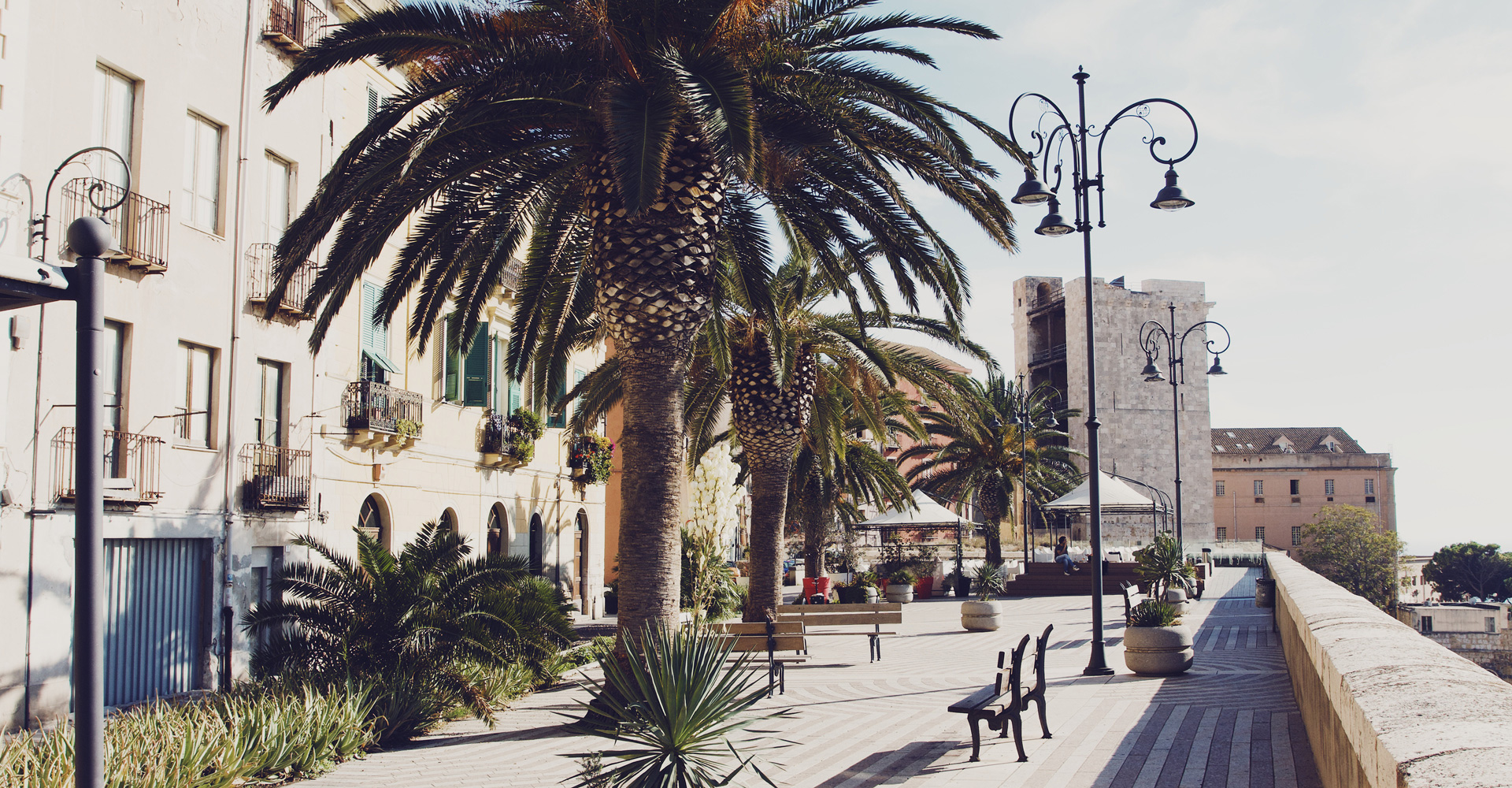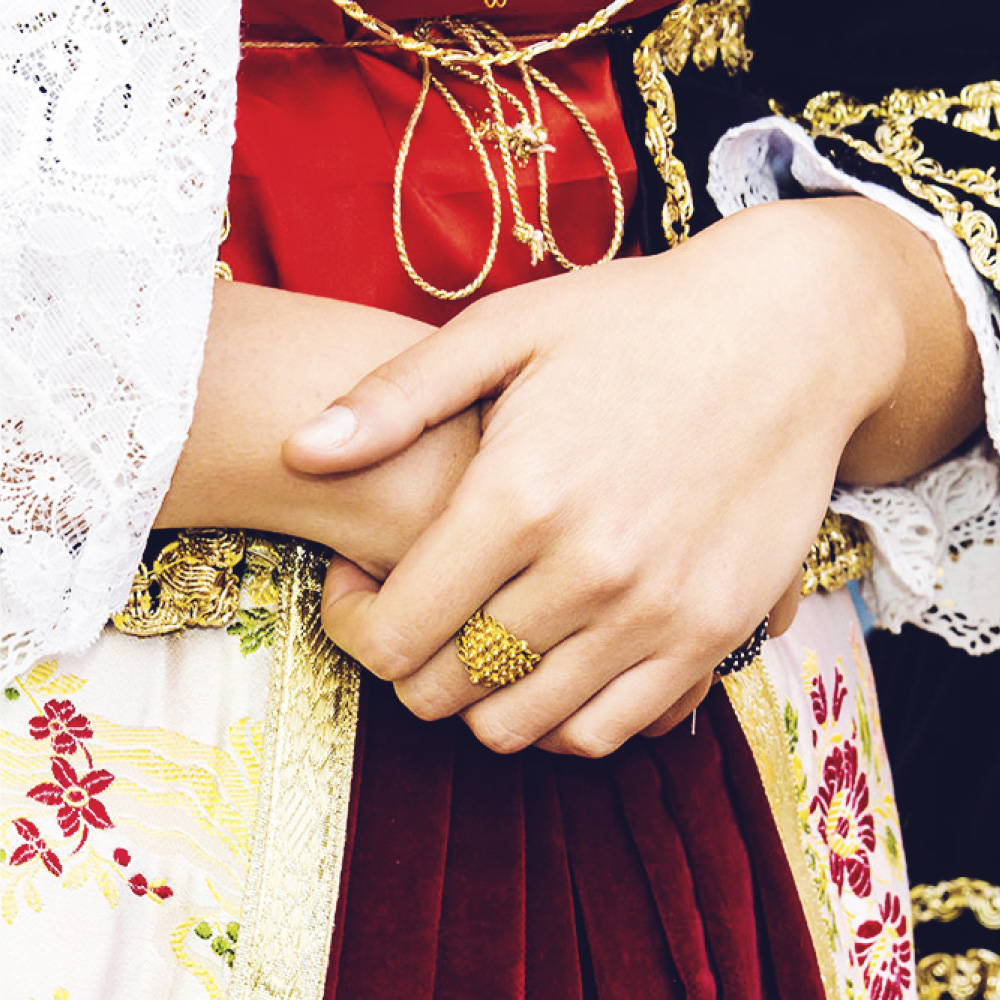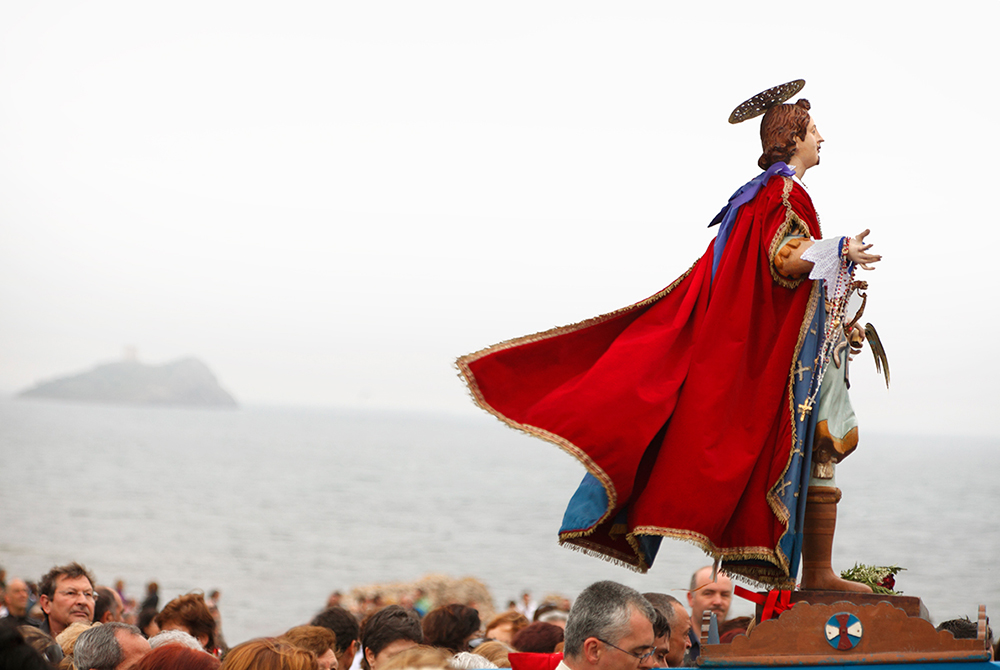
A visit to a previously undiscovered city, even before the city has disclosed its own history, opens up a completely new world. All of a sudden we become aware of how much the atmosphere of a place can be a decisive factor in all the lives that are rooted there. A realisation that in essence tells us how our own lives can be perceived in a completely different light by being in a place that is far away from where we call home.
 
– Cagliari: a city of light –
A short walk through the streets of the historic districts of Cagliari can be a truly exciting experience.
The city borders onto the sea to the south and to the east and the west onto the wetlands of the Molentargius and Santa Gilla marshes. The numerous hills on which the different neighbourhoods are perched look out onto the harbour and beyond to the sea, providing amazing views from each and every corner. Rather than by the merit of the architecture of the buildings encountered whilst walking through Cagliari, it is inevitable instead to be conquered by the city’s panoramic views. What best defines Cagliari is most definitely connected with light, with the sharpness of shadows, with the way darkness takes over after the sunset. When exploring Cagliari’s old neighbourhoods, it seems that the urban geometry is not so much about the streets, the profile of the ancient walls, the height of the towers, but rather about the sights, the points of view, the places of observation on the city’s highest points. For this reason, the right pace, when moving through the streets in the old part of town, is that of the flâneur or dawdler who saunters around observing society and wanders with the eyes rather than with the mind.
The historic centre of the city is constituted by the medieval quarter of Castello, built and fortified by the Pisan in the thirteenth century, which facilitate the expansion of what once were the satellite villages of Stampace, Marina and Villanova.
 
– Castello –
It is indeed very rare not having to climb or descend in this old part of Cagliari.
Your visit should therefore begin from its highest point, the Piazza Indipendenza, dominated by the fourteenth century Torre di San Pancrazio tower. And then continue in the tangle of narrow streets that leads to the Torre dell’Elefante tower, among the artisans’ workshops and antique dealers’ shops, the small bars and the trattorias, and some of the city’s most important historic buildings. First and foremost, the Cittadella dei Musei, the Museum Citadel, with the Archaeological Museum, the most important in Sardinia because of its vast collections and archives, and the Ethnographic Museum. And then, the Palazzo Viceregio and the Santa Maria Cathedral, one of the most popular and beloved monuments in the city, built by the Pisan and transformed in Baroque style by the Spaniards at the end of the seventeenth century. The Bastions of Saint Remy and Santa Croce are the ideal place for an aperitif: the bars and cafes overlooking the impressive architectural structures enjoy an extraordinary view of the city’s lower neighbourhoods, of the harbour and of the sea.
From the Bastion of Saint Remy, descending the white ramps of its monumental staircase, you will reach the small Piazza Costituzione with its many restaurants and the iconic Antico Caffè.
 
– La Marina –
From Piazza Costituzione, going down towards the sea, you enter the La Marina district: a maze of narrow streets that unravels upwards from the harbour and the porticoes in Via Roma. The aromas that you will experience during your walk reveal the multi-ethnic character of this part of Cagliari, which has always been a place of commercial and cultural exchange.
The neighbourhood was built in the fourteenth century by the Aragonese in an area dotted with Roman ruins and parts of the old medieval city, near where the Pisan and the Genoese first settled. The La Marina streets were then populated by those working at the nearby harbour, storing and sending goods overseas.
The Piazzetta Savoia, Piazza Dettori and Piazza San Sepolcro squares, the latter overlooking the church with the same name, are the epicentre of the district. The porticoes in Via Roma and the harbour are ideal settings for truly pleasant early evening walks.
 
– Villanova –
From Piazza Costituzione, but in the opposite direction to the Marina , the tree-lined walk of the Terrapieno is going to take you to the Giardini Pubblici public gardens and the Ex Polveriera building, now home to the Galleria Comunale d’Arte art gallery. At the beginning of this pleasant stroll you can visit the Giardini Sotto le Mura gardens where some important works by the local sculptor Pinuccio Sciola are exhibited. The district of Villanova develops further down, towards the east: from the Terrapieno, you will be able to appreciate its urban structure that has changed little since the past. Up to the sixteenth century, the conformation of the district was typical of an agricultural village, with houses flanked by farmed land. Traces of the many green areas of yesteryear remain in the many secluded gardens, next to which there are still many artisan shops and workshops. The Piazza San Giacomo and Piazza San Domenico squares with the respective churches are at the heart of Villanova: it is worth stopping for a drink in one of the many bars and restaurants overlooking the two small squares, where long-time residents mingle with newcomers with a naturalness that is difficult to find in other neighbourhoods in Cagliari.
 
– Stampace –
From Piazza Costituzione following Via Manno, you will soon arrive at the Piazza Yenne square, a focal point of the Stampace district. Dominated by the silhouette of the Elephant Tower and the Balice bastion, the square is surrounded by a complex of nineteenth-century buildings, shops and public spaces. The bronze statue of Carlo Felice, a former king of Sardinia, marks the centre of a hemicycle from which radiate some of the most important historic streets of the city: the wide Carlo Felice, the via Manno, Santa Chiara and its steps, via Santa Margherita and Corso Vittorio Emanuele. In this district you will find numerous shops, restaurants and clubs: we suggest a stop for a drink or a coffee at the iconic Caffè Svizzero at the bottom of Largo Carlo Felice.
 
One of the places of worship most beloved by the inhabitants of Cagliari is located on the upper part of Stampace on the slopes of the Buoncammino hill: the sixteenth century complex of the church and the convent of the Capuchin friars of Sant’Antonio da Padova. It is also worth visiting the most important testimony of the Roman era in Cagliari: the Amphitheater. Located in front of the above mentioned church and entirely excavated from the rocks between the first and second century AD, it was the scene of fights and clashes between gladiators and between gladiators and ferocious animals. A few steps away, the Botanical Gardens, one of the most important in Italy, and the so-called Villa di Tigellio, the remains of a thermal spa and three patrician houses, built by the Roman and inhabited probably until the III and IV century AD. Nearby you can also visit the great necropolis of Tuvixeddu, the most significant testimony of the Phoenician and the Punic civilisations in Cagliari, as well as the monument known as Grotta della Vipera: a tomb carved in limestone, dating back to when Cagliari was known as Caralis in Ancient Roman times.
 
 
– Sant’Efisio: the most authentic example of Sardinia’s folkloristic traditions –
The Stampace district is the starting point of the celebrations in homage to Sant’Efisio, a Roman soldier who converted to Christianity and was martyred in Nora. The celebrations have involved the entire island without interruptions since 1657, the year when Cagliari made a vow to the saint in order to try and avoid the plague. Since then, Sardinia invariably renews its vow and its devotion for the grace received by Sant’Efisio. Since then, every spring on May 1st, the streets of the city are covered with petals to welcome the statue of the Saint, which is carried and followed by a long procession of the faithful.
 
The dressing ritual opens the celebrations on April 30th . In a small church in Stampace, the neighbourhood where the Saint was imprisoned, the statue is wrapped in a long red damask cloak and embellished with a bejewelled gold halo . The following morning, after the Mass of the Alternos, the golden chariot carrying the eighteenth century statue joins the traccas, wagons pulled by richly decorated oxen, and proceeds to the head of the procession of groups in traditional costumes from villages and small towns from the entire island, escorted by the members of the Arciconfraternita, greeted by the sound of the bells of all the city churches and by the sirens of all the ships docked at the harbour. The streets smell of ramadura, the combination of flowers and essences scattered on the streets while the traditional costumes, each very different depending on the village or small town of provenance, are a wonderfully amazing spectacle of colours. The composed steps of the participants highlight the beauty of Sardinian craftsmanship and celebrates a thousand-year-old tradition. The procession moves slowly and solemnly slips through the buildings of a modern seaside city, flanked by a festive yet calm and collected crowd that still honours an ancient vow. Thousands of faithful follow the procession all the way to the Saint’s sanctuary in Nora, a nearby archeological site.
 
 
– Pula e Nora –
The small town of Pula, previously focused mainly on agriculture, is now a renowned tourist resort that offers unmissable leisure opportunities.
In the historic town centre, you can still admire some beautiful traditional houses built using ladiri, raw earthen bricks typical of southern Sardinian traditional building techniques. The houses are characterised by an inner courtyard that overlooks the portico and all the rooms in the house. Cultural events of great interest are often hosted in the Casa Frau, an elegant nineteenth century palace that overlooks the Piazza del Popolo.
 
Named after the archaeologist Giovanni Patroni, the Museo Civico museum is located in Corso Vittorio Emanuele. Its rooms and galleries display a number of findings from the excavations in the ancient city of Nora. Also very interesting, the numismatic collection in the Norace Museum, which contains coins relating to Greek, Punic and Roman times. Last but certainly not least, we suggest a visit to the Villa Santa Maria, designed in 1838 by Gaetano Cima who placed the beautiful neoclassical Palladian-inspired building within the greenery and vegetation of a large park.
 
A stone’s throw from Pula, the ruins of the ancient city of Nora, one of the most important Phoenician and Punic archaeological sites in Sardinia. The area includes the promontory that ends with the Capo di Pula. You can see traces of the oldest settlements of the site, dating back to the seventh century BC, overlaid with the remains of Roman buildings. Remarkable, among others, the sacred building in the Tanit hilltop, erected on preexisting Nuragic monuments. The impressive theatre is still used nowadays for concerts and for shows, held at evening time in summer, against the extraordinary background created by the walls and the mosaics of the ancient baths, by the columns of the equally ancient places of worship and with the gulf and of the now submerged port, to which Nora owed its fortune in its past, in the distance.





Three walks along the shore – three great small trips to discover the colours and fascination of a truly unique sea.

The coasts of Sardinia seen from an elegant schooner. Fresh breezes and clear seas under the shade of the spread sails.